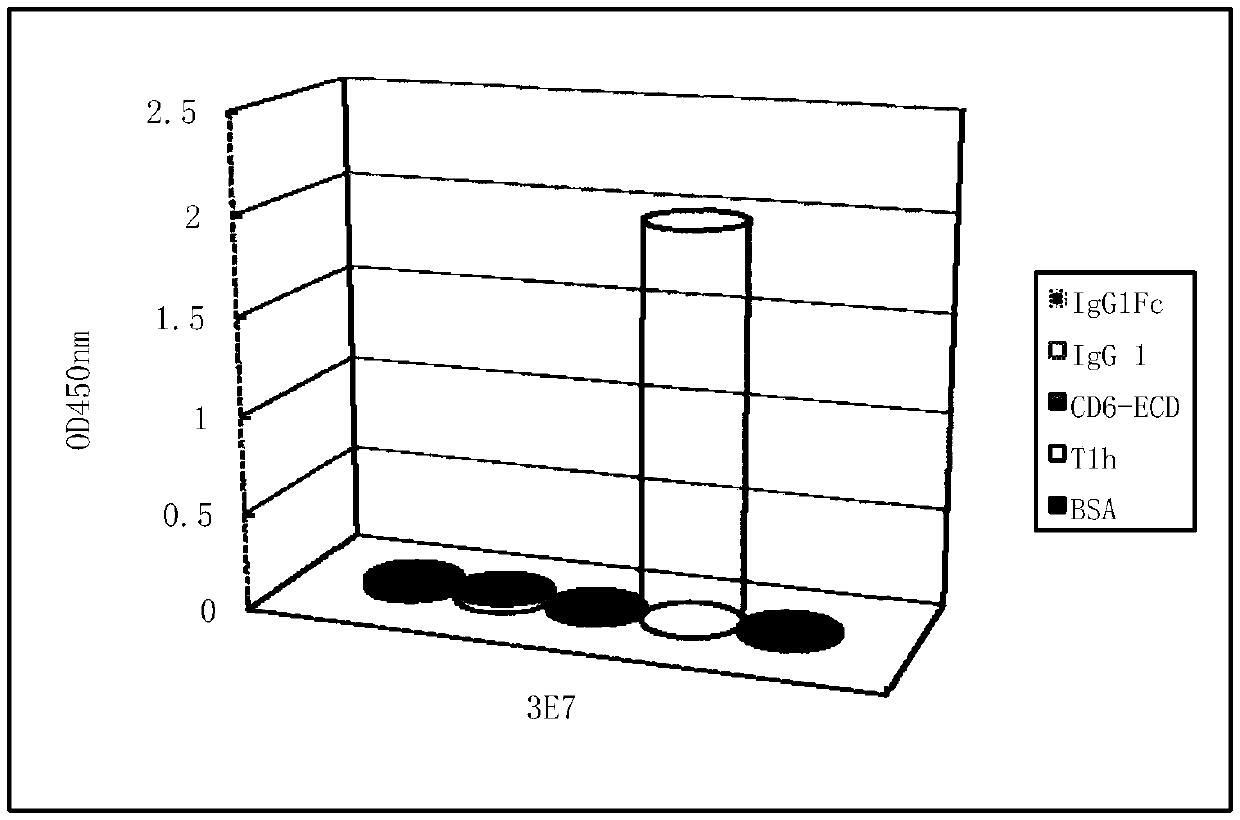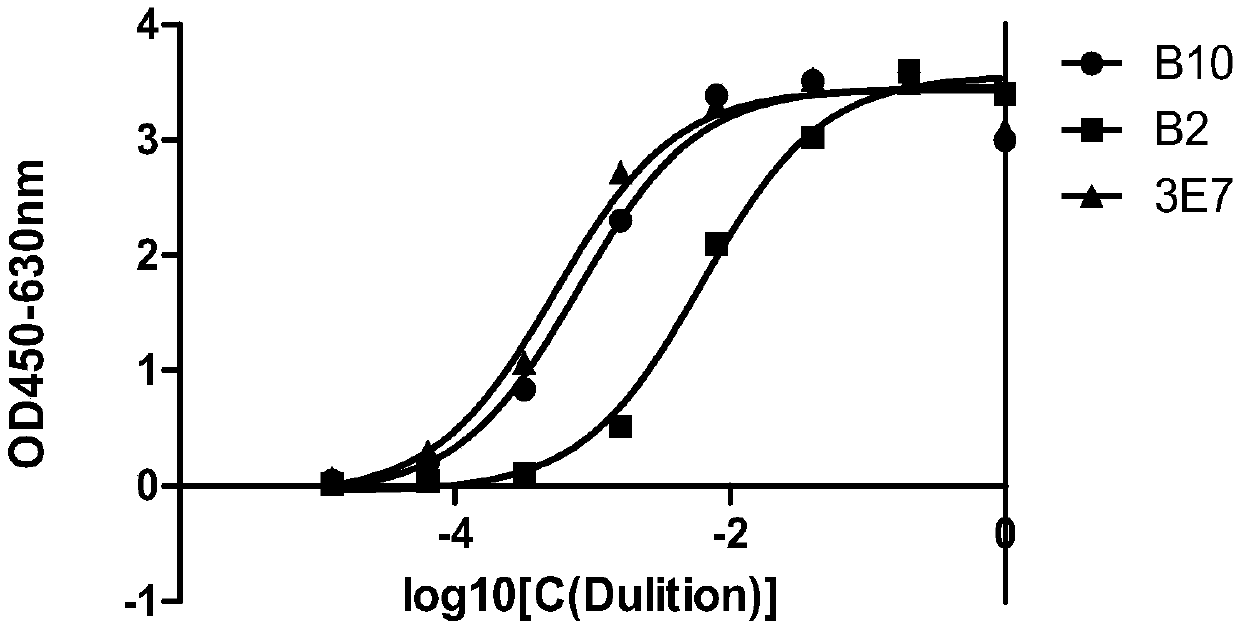Detecting antibody for CD6-resistant monoclonal antibody T1h and application
An antibody, whole antibody technology, applied in applications, biological tests, measurement devices, etc., can solve the problems of lack of neutralizing antibodies, no neutralizing antibodies, and inconvenient pharmacokinetic analysis.
- Summary
- Abstract
- Description
- Claims
- Application Information
AI Technical Summary
Problems solved by technology
Method used
Image
Examples
specific Embodiment 1
[0061] Specific Example 1, Biopanning of anti-T1h single-chain antibody
[0062] A series of gene cloning methods were used to transform the vector pcom3 vector (purchased from China Plasmid Vector Strain Cell Line Gene Collection Center) to be used for the construction and expression of phage single-chain antibody library. The transformed vector is named pScFvDisb-s, and its plasmid map is as follows: figure 1 As shown, and based on this vector, a fully synthetic phage antibody library was constructed.
[0063] Use T1h as the antigen to coat the immunotube, the amount of antigen coating is 5 μg / 500 μl / tube, and coat overnight at 4°C. The immunotube and the fully synthetic phage antibody library were then blocked with 4% skimmed milk powder / PBST for 1 hour at room temperature. The blocked phage antibody library was added to the immunotube for antigen-antibody binding, and the amount of phage input was about 10 9 ~10 12 , and reacted at room temperature for 1 h. Unbound ph...
specific Embodiment 2
[0066] Specific Example 2, Identification of Anti-T1h Phage Single-Chain Antibody Positive Clones
[0067] After three rounds of screening, well-separated monoclonal colonies were picked and inoculated in a 96-well deep-well plate supplemented with 2YTAG liquid medium, cultivated at 37°C and 220 rpm until the logarithmic growth phase, and about 10 10The helper phage M13KO7 was statically infected at 37°C for 30min. Centrifuge at 4000rpm at 4°C for 15min, discard the supernatant, resuspend the pellet with 2YTAK, and culture overnight at 28°C at 220rpm. The amplified phage supernatant was drawn for ELISA identification. Screened monoclonal antibodies 3E7, B10 and B2 with higher affinity, such as figure 2 As shown, the affinity of 3E7 from left to right is 0.0395 for IgG1Fc, 0.035 for IgG1, 0.0065 for CD6-ECD, 2.0065 for T1h, and 0.011 for BSA, and the affinity for T1h is higher. The 3E7, B10 and B2 monoclonal antibodies were identified as antibodies with different sequences ...
specific Embodiment 3
[0068] Specific example 3, gradient dilution phageELISA compares the affinity of anti-T1h single-chain antibody
[0069] The clones obtained in Example 2 were subjected to display and purification of monoclonal phage, and a phage gradient dilution ELISA experiment was performed to identify the affinity of phage-abs.
[0070] Coat T1h with pH 9.6 carbonate buffer solution, 200ng / well / 100μl, overnight at 4°C. Wash with PBST three times, block with 4% milk-PBST at 37°C for 1h. The purified phage was diluted five-fold with 4% milk-PBST, and 100 μl of the diluted sample was added to each well, and allowed to stand at room temperature for 1 hour. The ELISA plate was washed with PBST, the HRP-anti-M13 monoclonal antibody diluted in 4% milk-PBST was added to the ELISA plate, and left at room temperature for 1 hour. TMB color development kit was used for color development at room temperature for 10 min. with 2MH 2 SO 4 Stop color development, 50 μl / well. 450nm / 630nm readout. The...
PUM
 Login to View More
Login to View More Abstract
Description
Claims
Application Information
 Login to View More
Login to View More - R&D
- Intellectual Property
- Life Sciences
- Materials
- Tech Scout
- Unparalleled Data Quality
- Higher Quality Content
- 60% Fewer Hallucinations
Browse by: Latest US Patents, China's latest patents, Technical Efficacy Thesaurus, Application Domain, Technology Topic, Popular Technical Reports.
© 2025 PatSnap. All rights reserved.Legal|Privacy policy|Modern Slavery Act Transparency Statement|Sitemap|About US| Contact US: help@patsnap.com



